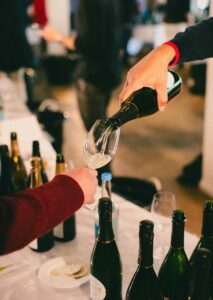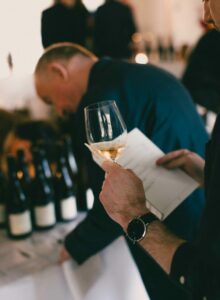Following our ‘Celebration of Spring’ tasting, where we showcased our range of ‘grower’ Champagnes, Charles Lea is sharing some of the secrets of Champagne on our blog. First, a brief breakdown of the label codes found on Champagne bottles, which can help clarify the origin of what’s in your bottle.

Most Champagne (around 70% by volume, 80% by value) comes from Négociant-Manipulants (NM), which are Champagne houses that buy grapes from multiple growers and blend them to create their own Champagnes. There also Négociants Distributeurs (ND), which buy and sell Champagnes produced by others, but these are a small part of the market.
Coopératives de Manipulation (CM) (around 11% by volume and 8% by value) are cooperatives of growers who pool their resources and grapes to produce and market their Champagne. The Champagne is usually sold under the brand name of the cooperative, but can be taken back by the grower to some members at various stages of winemaking (from unfermented must to finished Champagne) to be finished and marketed by them under the designation RC (Recoltant Coopérateur).
Both NMs and CMs are sources of Marques d’Acheteurs (MA) (8% by volume and 9 % by value), which are Champagne brands that buy ready-made Champagne from a producer and then sell it under their own label. All own-label (or ‘BOB’ – Buyer’s Own Brand) Champagnes are MAs.
The final type, and the smallest, is Récoltant-Manipulant (RM) also known as ‘grower Champagnes’, which represent 6% of sales by volume and 4% by value. These are independent winegrowers who own and cultivate their own vineyards and produce Champagne from their own grapes.

Grower Champagnes (RM) are often considered the most artisanal and terroir-driven Champagnes, while the larger Champagne houses (NM) tend to focus more on consistency and branding. Coopératives (CM) are a way for smaller growers to pool their resources and produce Champagne in larger quantities. Marque d’Acheteur (MA) Champagnes are often seen as a more commercial option, with less emphasis on terroir and winemaking traditions.
All these actors have a part to play. While historically it may have been individual growers (who would now be classified RMs) who started to make their own sparkling versions of Champagne (up until the late seventeenth century Champagne was largely a still wine), it was the merchant houses (the NMs) which were responsible for refining the production, and for popularising and marketing Champagne.
You can read on about the industry and these actors in our next piece, ‘Champagne: The Jigsaw of the market’.
